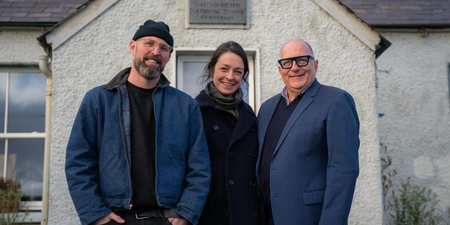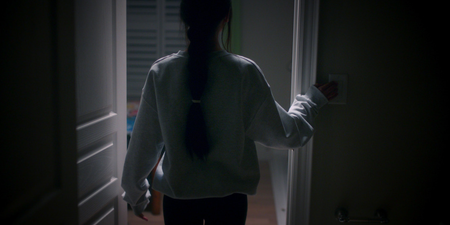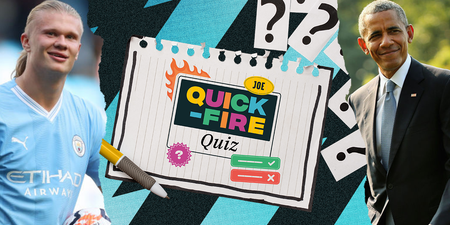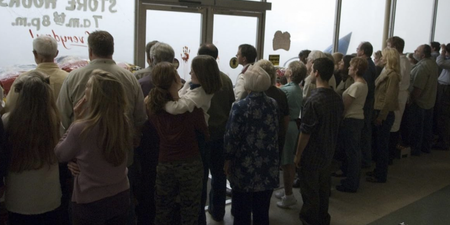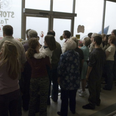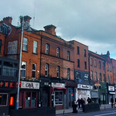This week, JOE’s business and money columnist Simon Moynihan takes a look at whether recent price drops have finally restored value to the Irish property market.
January is traditionally a very quiet month in the property market so it’s certainly an odd time of year to be musing on property. It’s not something I do much of and it’s not my area of expertise. And of course Irish people have talked enough property over the last decade to do for a generation and are so hung-over from the bust that the thought of another “launch” or “opportunity” would probably turn them green.
Anyway, what’s the point? The banks aren’t lending, people can’t sell and prices still seem to be falling. The once hallowed Irish Times property section is rarely even a supplement anymore, it’s been reduced to little more than a page or two at the back of the paper.
All neighbourhoods have houses that have been for sale for years – and we snoop online every now and then and hope that they don’t cut prices any further, as it gives us that queasy feeling about the value of our own homes.
So where am I going with this? Well, a few interesting things have happened recently. Our Government has finally realised that there is not going to be any money in stamp duty for a long, long time so they’ve decided to slash it and slowly bleed us dry with a property tax instead.
You can now buy a house for 2002 money, apparently. Well, if you have the money, that is.
Then there were three New Year reports that said property prices had fallen by another around 14 per cent in 2010 – so you can now buy a house for 2002 money, apparently. Well, if you have the money, that is.
With stamp duty cut, there was lots of chatter about how it might apply a jolt of life to the property market, and it just might. It means that people with deposits could theoretically use them as actual deposits instead of having to save up two of them to cover the stamp duty as well.
So good news for home buyers in all price brackets, right? Well, it’s certainly good news for the initial purchase, but there’s still the issue of home owners who’ve already paid 9 per cent stamp duty.
It’s also worth pointing out that if you buy a home and own it for say 40 years, and the Government charges an annual property tax of 1 per cent, you’ll fork over at least 40 per cent of the price you paid for the house in taxes (depending on how the tax is calculated, and you can bet it won’t be favourable to the homeowner). So in reality, it’s good news for those looking to get into their own home, bad news for home-owners in the long term and good news for the Government. No kindness there.
Next there’s falling house prices. A drop of 14 per cent is extraordinary hammering for any market to take. It’s luxury car type depreciation and none of the guys at Daft, MyHome or Sherry Fitz who produced the New Year’s grimmest news expect prices to stop falling. And that’s coming from estate agents.
Confindence
In certain parts of the country prices may not fall that much further though. I know there’s no confidence in the market, there’s very little credit out there and the banks are broken and owned by the State. But there is one thing to hang a little hope on…
Last July, The Economist magazine published a report that said that Irish homes were about 16 per cent overvalued at the start of 2010. They base their analysis on what they call “fair value” which is a comparison between what it will cost you to pay down the loan and what you can rent in a similar property in the same neighbourhood for. Face-washing, basically.
So if the value of Irish property has lost another 14 per cent then surely by The Economist’s reasoning, we’re reaching “fair value” now?
Of course, property could continue to fall and become undervalued, which given the fact that you can’t borrow, taxes are up and jobs are scarce is certainly likely. We’ve also got the problem of oversupply. But there’s something in the Irish psyche that is attracted to bricks and mortar as an investment and there is still an awful lot of money in Irish bank accounts.
The question then is: can you really buy a standard house in a desirable neighbourhood for the same monthly cost as you could rent for? Or in investor terms, could your rent cover your payments?
I’ve looked at a large number of properties in different areas for this experiment. However, for the sake of simplicity, I’ve given examples of two semi-detached homes in neighbourhoods that are well serviced by public transport, schools and amenities. According to estate agents, these seem to be the only homes in demand at the moment.
In Blackrock, Co Dublin, Allen and Jacobs Estate Agents recently took over the selling of a four-bed semi in the Coppinger Glade estate. At the risk of sounding like an estate agent myself, it’s a nice recently built home in a cul-de-sac overlooking a green and is close to public transport, shopping and schools.
Thanks to the magic of The Irish Property Watch website at www.irishpropertywatch.com we can see that the house first hit the market in June 2009 with a selling price €650,000.18 months and several price cuts later, the house is now for sale at €419,950 – a drop of 35 per cent.
In the same estate, there’s a similar four-bed semi for rent. It’s the same design but a little smaller, as the one for sale has a kitchen extension. The house comes furnished or unfurnished and is in good condition. The owner is looking for €1,750 per month rent. Which I’m sure he’ll get.
So, let’s imagine you have the 10 per cent deposit, 1 per cent stamp duty and could get a loan to finance the house for sale. With an asking price of €419,950, we borrow 90 per cent which is €377,955 on a standard variable rate of 3.5 per cent over 30 years. The payment without any breaks or mortgage interest relief comes to just under €1,700 per month. With interest relief, payments could be as low as €1,500 per month.
With these Dublin houses we’re looking at a yield of about 5 per cent. That’s the best we’ve seen in a very long time.
From a landlord’s perspective, I know that there are vacant months, upkeep and taxes to consider, but for the purpose of this exercise, it looks like “fair value” has been reached both for the owner occupier and the investor in this sought after south Dublin neighbourhood.
In Clonskeagh, which is also a well serviced neighbourhood in south Dublin, Lynam Estate Agents are selling a three-bed semi in Roebuck Downs for €465,000. Roebuck Downs is also a nice estate with open areas and parkland. The house has been for sale for about six months and so far, there have been no price cuts. In the same estate there’s a similar three-bed semi for rent at €1,800. It’s unfurnished and in very good condition.
Using the same criteria as last time, mortgage payments on the house for sale would be €1,880, so rent of €1,800 would leave a small shortfall, but again, we’re very close to “fair value”. And I’d bet that for a buyer with the cash, that sale price is very negotiable.
Also, a single owner-occupier eligible for mortgage interest relief could expect to pay less than €1,700 per month. Again, “fair value” appears to be achievable in this neighbourhood.
Another way of deciding whether property is worth investing in is to look at the rent as the yield on an investment rather than the recent Irish method of looking at the appreciation in the property’s value.
Suppose you buy one of these houses for cash. The rent you get is then the yield on your investment. With these Dublin houses we’re looking at a yield of about 5 per cent. That’s the best we’ve seen in a very long time, but with the spectre of further drops in value haunting the property market, it’s probably not high enough to attract cash investors yet.
I contacted the Allen and Jacobs Estate Agency and spoke to Andrew Allen, one of the founders. He said that this January has been much busier than in recent years and believes it is partly on the back of the stamp duty cut.
Recovery
He also pointed out: “When people talk about prices going up or down it is in a very general sense and usually refers to the whole country. Many properties are actually starting to ‘wash their faces’ in some of the better areas.
“When you consider that a buyer could stop paying rent and instead chip away at their mortgage, it does appear that buying is starting to make more sense. It’s a little academic though. If you can’t get your hands on cash then you can’t buy, and in my view that is the main stumbling block to a recovery in the market.”
There are plenty more examples of so called “fair value” in Ireland now but I’m certainly not advocating that renters suddenly buy and investors start snapping up properties. In my opinion, for house prices to stop falling, a number of vitally important things need to happen.
Firstly, cash investors need to come back into the market and with yields at about 5 per cent, there’s probably still a good way to go before investors return. Next, as Andrew Allen commented, credit needs to become available. It’s been well documented over the last year that the banks are simply not lending (PWC and the Irish Banking Federation disclosed last summer that lending had fallen by 85 per cent from the top of the market).
Third, nobody knows what’s going to happen when the moratoriums come to an end. There are tens of thousands of householders that are seriously behind in their payments and if these houses are repossessed and sold openly for whatever the market will bear, we may finally see what true Irish market value actually is.
Simon Moynihan is the joint founder and communications manager of Irish price comparison site bonkers.ie, which he established with David Kerr in November 2009. The site provides users with a free personal finance comparison service which helps them choose the most competitive broadband & home phone packages, electricity suppliers, savings accounts, current accounts, credit cards and personal loans.
LISTEN: You Must Be Jokin’ with Aideen McQueen – Faith healers, Coolock craic and Gigging as Gaeilge






























